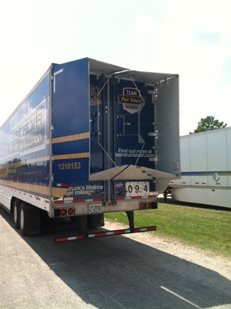As we know, air is an essential part of our lives. We need oxygen to breath just as our vehicle engines require air as part of the combustion process. Humans have figured out how to harness the power of “air” to operate mills, pump water, move ships or fly a kite.
Air can be destructive to our daily lives when weather brings upon us bad storms such as hurricanes and tornadoes. Humans have spent years harnessing the energy of air, navigating through the air with airplanes and minimizing its drag as we move in various modes of transportation on the earth.
The body shape for the least aerodynamic wave drag is known as the“
Sears-Haack body”, which is a shape that essentially consists of an elongated tube with pointed ends. The derivation and shape were published independently by two separate researchers: Wolfgang Haack in 1941 and then by William Sears in 1947. This is the shape in which most high efficiency vehicles, race vehicles and even planes try to mimic this shape. In trucking, the most efficient shape for transporting freight is the square shape of a trailer. This as we know isn’t very aerodynamic. The Sears-Haack body shape has been achieved somewhat with the sloping modern aerodynamic cabs on newer model trucks.
I was doing some research on what is referred to as Boattails and Kammbacks. A boattail can greatly reduce

a vehicles total drag. Boattails create a teardrop shape that will give the vehicle a more streamline profile, reducing the occurrence of drag inducing flow separation. To have a complete boattail in the shape of a Sears-Haack body would be much too long to ever be practical on a semi- truck and trailer. A Kammback is a truncated boattail. It is created as an extension of the rear of the vehicle, moving the rear backward at a slight angle towards the bumper of the car. This can reduce drag as well but a boattail would reduce vehicle drag more. However, the Kammback is more practical from a packaging standpoint. The Kammback was derived from the German aerodynamicist Wunibald Kamm in the 1930’s. The
trailer tail which I’ve added to the back of my trailer is essentially a Kammback.
Through the efforts of Freightliner’s engineers combined with the added aerodynamic enhancements which have been made to my trailer, we are moving closer to mimicking the shape of the Sears-Haack body. The overall objective here is to” annoy” the air as little as possible. I think of my bank account and the money that comes out each time I disturb the air.
With all the battles we engage in the trucking industry Such as, government regulations, brokers, shippers, consignees, and traffic as well as many others… why would we want to pick a fight with the very “air” itself?
